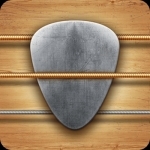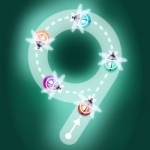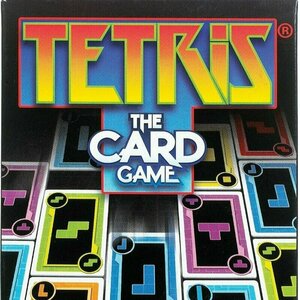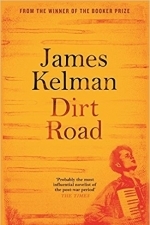![Romantic Piano[Richard Clayderman]](/uploads/profile_image/010/c0538df6-2b79-477d-8016-ec692bcec010.jpg?m=1522338406)
Romantic Piano[Richard Clayderman]
Lifestyle
App
Romantic piano music, listen to the best of Richard Clayderman。6 CD,3 Series,you will love it....

Real Guitar Free: Chords, Tabs & Simulator Games
Music
App Watch
Playing the guitar has never been easier with #1 guitar playing app! Learn chords and create music...
music

123 Tracing Numbers: Montessori math game for kids
Education and Games
App
Today only, get the app with a 30% discount! Limited time offer! 123 Tracing is an action-packed...
Purple Phoenix Games (2266 KP) rated Tetris: The Card Game in Tabletop Games
Jul 2, 2020
Tetris: The Card Game is a game of hand management and pattern recognition in which players are racing to be the first to earn 10 points. Setup is simple – shuffle the entire deck of cards, and deal 10 to each player. The cards are double-sided, with one side depicting a Tetris Matrix, and the other depicting a specific Tetromino. Arrange your cards in a 2×5 grid, with the Tetromino side facing up. This grid will act as your personal scoring track. Place the remaining cards, Matrix-side up, in a draw deck in the center of the table. Deal 1 additional card to each player, to go in hand, and the game is ready to begin! You will be using your hand of cards, Tetromino side, to complete the Matrix side of the top card of the draw deck.
A round of play is pretty straight-forward: draw one card, play one card. At the start of your turn, draw the top card from the draw deck. This will reveal a new Matrix on the next card of the draw pile. Choose one of your two cards in hand to complete at least 1 row in the revealed Matrix. Play the card, showing your opponents how it would fit into the Matrix, and score points. You score 1 point per row completed, so if your piece completes 2 rows, you would score 2 points. To track your points, you flip over cards in your 2×5 grid to their Matrix sides, to represent your scored points. If on your turn, you are unable to complete a Matrix line with either of your cards in hand, you must discard one card, and are also penalized by having to forfeit one of your earned points, flipping that card back to its Tetromino side. There are also a handful of Special cards that can be used to manipulate play, whether Reversing the play direction, or forcing a player to lose a point, and that adds a new little twist to the game. The game ends when one player has scored all 10 points and is declared the winner!
Probably the best things about Tetris: The Card Game, is that it is so simple to learn and play. The simplicity brings back the nostalgia of the original game to the extreme. It’s a super light game that can be used as a filler/palate cleanser between bigger games, or just as a game to toss on the table when you’ve got 5 free minutes. Another added bonus of its simplicity is that it is pretty friendly for younger/newer gamers. Looking to get your young’uns into the hobby, or just spreading some happiness with friends and colleagues? This is a good introductory game that is light-hearted, although not a complete brain burner.
Now, on the flip side, there are some drawbacks to this game. The first and biggest being that it is entirely based upon the luck of the draw. There is pretty much no strategy involved, because you are at the mercy of the draw deck. You really can’t set up a game strategy that can be adapted throughout a play because the game is so dependent upon luck. Depending on the current Matrix in play, certain Tetrominos could not be used at all to complete a row, so you end up having to burn a turn (and losing a point) to discard a card. And then you have to hope for the best next turn. Another drawback of this version of Tetris is the hand limit of 2 cards. That severely limits your options each turn, and can turn the game from light-hearted to frustrating because of a lack of choices. This hand limit also limits any strategic options. Certain Matrices can only be completed by certain Tetrominos, so unless you have those in hand, you’re stuck wasting a turn. The Special cards included in the game add a twist to the gameplay, but are a little too ‘take that’ for my taste. But without them, there is no player interaction at all. So it’s kind of a lose-lose situation for me in that regard.
Ultimately, I would say that the OG Tetris is still king. This game attempts to encompass the atmosphere and enjoyability of the video game, but it just falls flat for me. It is too dependent upon luck, and doesn’t offer enough strategic choices for players, so it ends up feeling bland and unengaging. Am I happy with this game? Honestly, no. But playing this with the right group of people could still result in some entertainment and good times. If luck-based games are your thing, then definitely consider this game. But if not, let OG Tetris be your go-to game to fulfill your tile-dropping, row-completing urges. Purple Phoenix Games gives Tetris: The Card Game a blocky 4 / 12.

Footsteps - Pedometer
Health & Fitness and Lifestyle
App
33% OFF for a limited time! Named 3rd best pedometer on Channel 5's The Gadget Show Top 5 with...

Footsteps - Pedometer Free
Health & Fitness and Utilities
App
This free version can count up to 3000 steps a day. Named 3rd best pedometer on Channel 5's The...

iTablaPro - Tabla Tanpura Player
Music and Lifestyle
App
Come sit down for a session with our Tabla Pro. Experience virtuoso, realistic tabla playing, and...

AmpliTube Slash for iPad
Music and Entertainment
App
SLASH TONE ON YOUR iPAD. NOW WITH 3D CAB MIKING, MIC MODELING, A DAW-STYLE EDITOR AND MORE Want to...

AmpliTube Slash
Music and Entertainment
App
SLASH TONE ON YOUR iPHONE. NOW WITH 3D CAB MIKING, MIC MODELING, A DAW-STYLE EDITOR AND MORE Want...
Eilidh G Clark (177 KP) rated Dirt Road in Books
May 13, 2017
While this may appear a simple story line, Kelman’s exploration into the fragmented relationship between father and son gives the reader an honest analysis of family and grief. The third person narrator, with bursts of free indirect discourse from Murdo, allows the reader both an internal and external insight into the constraints of family. This parallel leaves the reader feeling uncomfortable, yet with a conflicting heart. This is Kelman’s unique writing style at its best.
Dirt Road is more than a novel of grief and family relationships though; it is a novel of risk, of following new paths with uncertainties, about leaving behind the familiarities and safety of the past and following the heart. It is about deep connections; for Murdo this is through music and the feeling of freedom that he associates with music, whilst for the other characters it is about cultural connections and Scottish ancestry. Kelman’s clever use of parallels shows the reader the intensity of human connections whilst suggesting that change and progression is possible. This great novel will linger in your thoughts for weeks after you put it down, and it brings to mind a poem by Robert Frost, The Road Not Taken
I shall be telling this with a sigh
Somewhere ages and ages hence:
Two roads diverged in a wood, and I—
I took the one less traveled by,
And that has made all the difference.
For the full poem visit (https://www.poetryfoundation.org).
Dirt Road by James Kelman
Canongate Books (14 July 2016)

